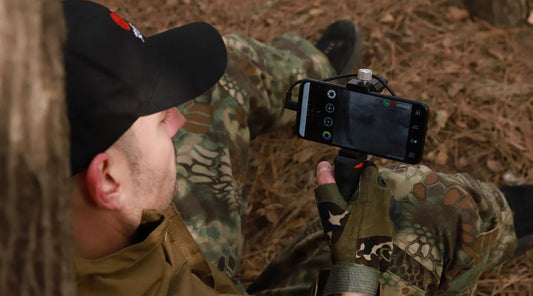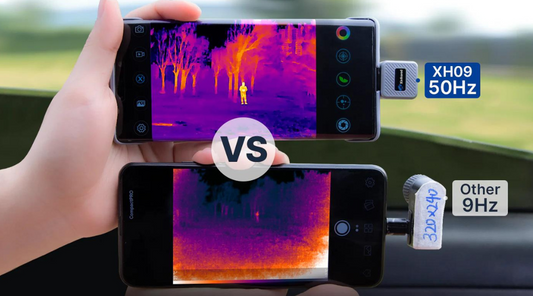How Thermal Cameras Work and Transform Heat into Sight
Thermal cameras may seem like something out of a science fiction movie, but they operate based on well-established principles of physics and technology. To truly appreciate their capabilities, it's essential to delve into the fascinating world of how thermal cameras work.
Infrared Radiation- Explanation of Infrared Spectrum
The magic behind thermal cameras lies in the realm of infrared radiation. Unlike visible light, which we perceive as colors, infrared radiation is invisible to the human eye. It exists just beyond the red end of the visible light spectrum, which is why it's called "infrared," meaning "below red." Thermal imaging primarily focuses on the longer wavelengths, typically between 3μm to 14μm.

This is the world’s smallest thermal camera InfiRay Xinfrared P2 Pro, which is equipped with the 12μm InfiRay detector
Infrared radiation is essentially heat energy emitted by all objects with a temperature above absolute zero (-273.15°C or -459.67°F). The hotter an object is, the more infrared radiation it emits. Thermal cameras capture and convert this invisible infrared radiation into visible images, allowing us to "see" heat.

Temperature Measurement
1. Emissivity
Emissivity is a critical factor in accurate temperature measurement with thermal cameras. It quantifies how well an object emits infrared radiation compared to an ideal emitter called a "blackbody." Emissivity values range from 0 (perfect reflector) to 1 (perfect emitter). Different materials have different emissivity values, so understanding and setting the correct emissivity for the material being observed is crucial for accurate temperature readings. For example, metals tend to have lower emissivity values than non-metallic surfaces.
2. Thermal Resolution
Thermal resolution is another essential aspect of thermal cameras. It determines the smallest temperature difference that the camera can detect and display. The higher the thermal resolution, the finer the details you can discern in thermal images. It's typically measured in millikelvins (mK), with lower values indicating better resolution. A higher thermal resolution allows for more precise temperature measurements and the identification of subtle temperature variations.

Image Formation
1. Heat Distribution Visualization
Thermal cameras visualize heat distribution by capturing the variations in the intensity of infrared radiation emitted by objects in their field of view. These variations are translated into temperature differences, which are then depicted as a grayscale or color image. The colors typically range from cooler blues and greens to warmer yellows and reds, with each color representing a specific temperature range. This visualization allows for a quick and intuitive understanding of temperature differences within a scene.
2. Color Mapping
Color mapping is a technique used to enhance the interpretability of thermal images. By assigning colors to specific temperature ranges, thermal cameras make it easier to distinguish between objects with different temperatures. Common color maps include the "rainbow" or "iron" palette, where colors like blue, green, yellow, and red represent progressively warmer temperatures. Color mapping helps users quickly identify hotspots, anomalies, or areas of interest within a thermal image.

When using thermal imaging cameras, understanding their working principles is of utmost importance as it enables you to harness the full potential of this powerful technology. These cameras are not limited to the realm of scientific laboratories or industrial applications; they have seamlessly integrated into our daily lives. Whether it's ensuring the electrical safety of our homes, improving energy efficiency, or safeguarding our surroundings during the night, thermal cameras have evolved into versatile tools.
With technology continually advancing, thermal cameras are in a constant state of evolution, offering higher resolutions, smarter features, and broader application prospects. From medical diagnostics to environmental monitoring, they will continue to play a pivotal role in various fields. Therefore, for those looking to master this technology and reap its benefits in the future, understanding their working principles and staying updated with their latest developments is paramount.




